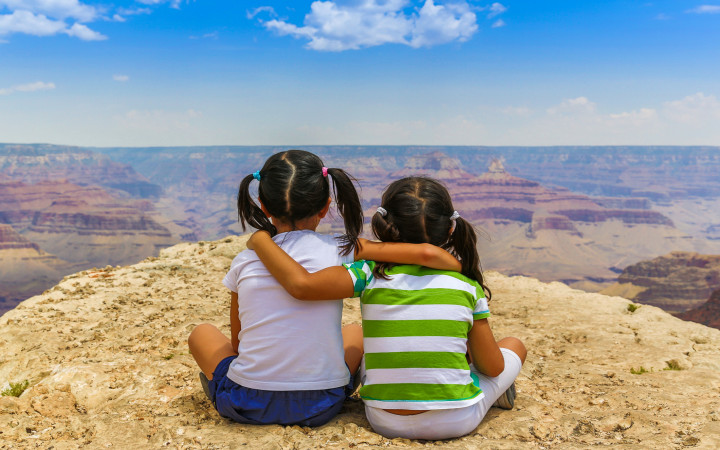Today’s Wonder of the Day was inspired by Alex. Alex Wonders, “What is geomorphology?” Thanks for WONDERing with us, Alex!
Look outside. What landforms do you see? Are there hills? Mountains? Maybe you see plateaus or canyons. If you’re near the ocean, you might see a shoreline or sand dunes. Have you ever WONDERed just how each landform came to be?
If so, this Wonder of the Day is right for you. We’re learning about geomorphology! That’s the study of landforms. This science is all about where landforms come from and how they change.
People who study geomorphology are called geomorphologists. They spend a lot of time learning about erosion and deposition. You may have heard of erosion before. It’s the wearing away of rock and soil by forces like wind and water. Deposition is just the opposite. It’s when rock and soil are added to a location. Together, these two processes help form many of the Earth’s landforms.
What else does geomorphology include? It can be broken down into several smaller areas of study. For example, some people learn about fluvial geomorphology, which is how rivers and streams affect landforms. Have you ever WONDERed how a river formed the Grand Canyon? If so, this field may interest you.
Geomorphologists also study changing glaciers and the mass movement of rock and soil. Some focus on underwater formations, like ridges and continental shelves. Others study landforms on other planets. Geomorphology also overlaps with many other parts of science. Experts in this field may know a lot about volcanoes, plate tectonics, and natural disasters.
Why is geomorphology important? It can help people better understand our changing planet. This field of study leads to more knowledge about the Earth’s past. It can also help experts predict how landforms may change. Many people who work in this field help identify the impacts of climate change, such as rising sea levels.
Are you interested in learning about Earth’s changing landforms? You can prepare to become a geomorphologist today. Work hard in science class and learn more about landforms in your spare time. Then, you’ll need to go to college. Often, people who work in this field earn degrees in geography or geology first.
The Earth is full of incredible land formations. From the Atacama Desert to Heaven’s Gate, each one has a story. And every story is still being written! Pay attention to the world around you, and you may just see the world changing right in front of your eyes.
Standards: CCRA.L.3, CCRA.L.6, CCRA.R.1, CCRA.R.2, CCRA.R.4, CCRA.R.10, CCRA.SL.1




